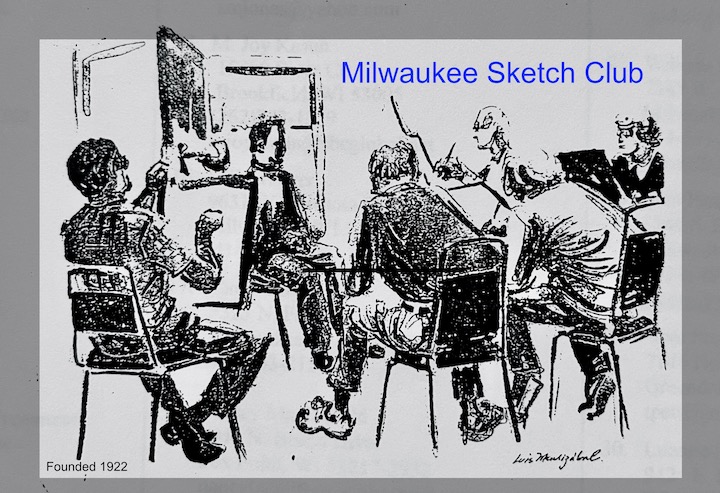Michael Foster, http://michaelfosteronline.com , is an oil portrait artist and teacher. He has a Masters of Art in Visual Studies from Cardinal Stritch University and has exhibited in several shows including solo shows at the University of Wis. Waukesha and the Sharon Lynne Wilson Center, Brookfield Wi. See his website for his work and current exhibitions.
He demonstrated a larger than life oil portrait at least 4' x 4' on a braced masonite panel, gessoed then wiped with burnt sienna. He worked from a black and white photo so he could visualize the color mood. He works with values, form, questions of form and chooses his own colors.
His first step was to rough in the locations of the face's features with charcoal. First getting the size and placement, Then working on the tilt and turn. He compares what is unknown to what is known, relates it to the whole. If something doesn't seem to be right, cover it with your hand and it will jump to the right place so you can correct it. He started by roughing in the top and middle of the head, then the chin. Then the middle vertical, tilt and shoulders. Then eyes, brows & nose, then eye width and nose width. Then hair & forehead.
He decided on a dominant complementary color scheme of purple and yellow, with a secondary complementary color pair of green and red. He started by blocking in the large dark shapes with purple, then put in the primary light source with yellow-green and the secondary light source with alizarin. Then colors were continually refined while remaining in the same color scheme. Areas were lightened with white and yellow.
He applied the paint directly from the tube to the painting. Colors were mixed directly on the painting. He used several bristle filbert brushes so didn't need to keep cleaning brush. He worked from large to small shapes. When correcting he paints right over the form, then once it's right he wipes out the error. He used the directional flow of the brush strokes to sculpt and carve out the forms.
He tries to get the entire painting as close to done in one sitting. Then lets it dry several days before reworking and glazing. If he doesn't like a particular area's texture he peels it off with a palette knife or sands it. He says when you paint a lot things happen faster.
He uses a very thin layer of retouch varnish applied with sponge brush on his paintings. It can be carefully wiped off with solvent and Viva paper towel if painting is dry before applying.
He takes his own photos using a canon sl and mostly one light source with a white card reflector. You can see his photos on his website that he built this summer using http://otherpeoplespixels.com/ that his friend Tom who is an abstract artist recommended.
All in all an excellent demo.
